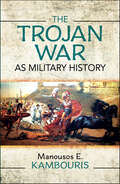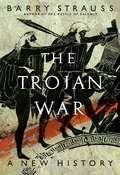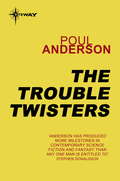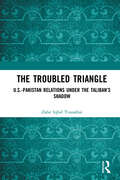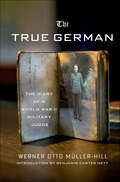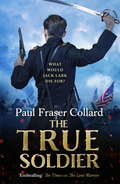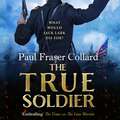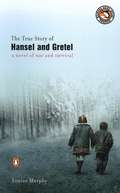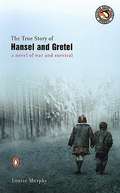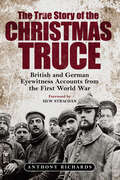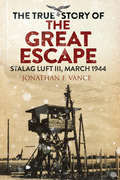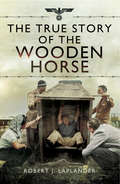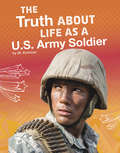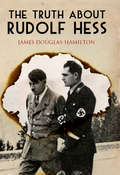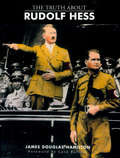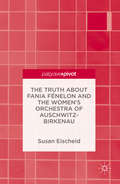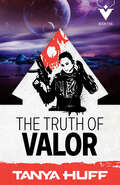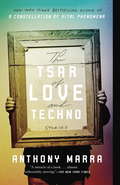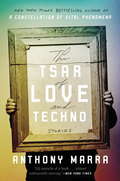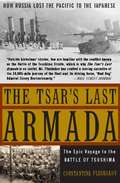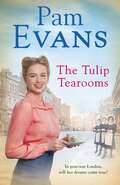- Table View
- List View
The Trojan War as Military History
by Manousos E. KambourisIn The Trojan War as Military History, the author's starting point is the fact that the Iliad, notwithstanding the fantastical/mythological elements (the involvement of gods and demigods), is the earliest detailed description of warfare we have. Stripping away the myths, Manousos Kambouris analyses the epic and combines it with other textual and archaeological evidence to produce a coherent narrative of the conflict and of Bronze Age warfare in the Aegean. The author presents the most detailed analysis possible of Mycenaean Greek armies - their composition and organization, the warriors' weapons, armor and tactics, and those of their enemies. He finds sophisticated combined-arms forces blending massed infantry with missile troops and chariots, employing open battle, deception and special operations in what amounted to total war. The author's detailed examination of the mechanics of Bronze Age combat is enriched by his use of insights from experimental archaeology using replica equipment. No less illuminating or significant than the minutiae of heroic duels is the setting of the strategic context of the conflict and the geopolitical relationship of the Mycenaean Greeks with their rivals across the Aegean. Seeking to integrate the supernatural/divine element of the Iliad within the power structure and struggle of the day, the author lashes the Trojan War to the chariot of rationality and drags it from the mists of mythology and into the realm of History.
The Trojan War: A New History
by Barry StraussThe Trojan War is the most famous conflict in history, the subject of Homer's Iliad, one of the cornerstones of Western literature. Although many readers know that this literary masterwork is based on actual events, there is disagreement about how much of Homer's tale is true. Drawing on recent archeological research, historian and classicist Barry Strauss explains what really happened in Troy more than 3,000 years ago. For many years it was thought that Troy was an insignificant place that never had a chance against the Greek warriors who laid siege and overwhelmed the city. In the old view, the conflict was decided by duels between champions on the plain of Troy. Today we know that Troy was indeed a large and prosperous city, just as Homer said. The Trojans themselves were not Greeks but vassals of the powerful Hittite Empire to the east in modern-day Turkey, and they probably spoke a Hittite-related language called Luwian. The Trojan War was most likely the culmination of a long feud over power, wealth, and honor in western Turkey and the offshore islands. The war itself was mainly a low-intensity conflict, a series of raids on neighboring towns and lands. It seems unlikely that there was ever a siege of Troy; rather some sort of trick -- perhaps involving a wooden horse -- allowed the Greeks to take the city. Strauss shows us where Homer nods, and sometimes exaggerates and distorts, as well. He puts the Trojan War into the context of its time, explaining the strategies and tactics that both sides used, and compares the war to contemporary battles elsewhere in the eastern Mediterranean. With his vivid reconstructions of the conflict and his insights into the famous characters and events of Homer's great epic, Strauss masterfully tells the story of the fall of Troy as history without losing the poetry and grandeur that continue to draw readers to this ancient tale.
The Trouble Twisters: Polesotechnic League Book 3 (POLESOTECHNIC LEAGUE)
by Poul AndersonMeet David Falkayn, sharpest young trader in the Polesotechnic League and susceptible only to the lithe curves of unwary space-girls. In three ingenious, fast-paced tales of interplanetary adventure and intrigue, Falkayn shows himself equally handy with his wits and a blaster. See him untangle alien taboos, outwit alien invasions, manoeuvre adroitly through alien revolutions - and then twist everything up again for his own crafty purposes.
The Troubled Triangle: US-Pakistan Relations under the Taliban’s Shadow
by Zafar Iqbal YousafzaiThis book is a comprehensive analysis of the Taliban, and how it has affected post-9/11 U.S.-Pakistan relations. It analyzes the genesis of the Taliban, the rationale behind their emergence and how they consolidated their rule in Afghanistan from 1996 to 2001. It examines the U.S. policies towards the Taliban in the post 9/11 era and Pakistan’s role as an ally in their efforts towards dismantling Taliban rule in Afghanistan—from Obama’s ‘fight and talk’ policy to the Doha peace agreement in 2020. It also discusses the outcomes of the Global War on Terror (GWoT), as well as the Taliban’s response to the U.S.-led ISAF and NATO forces in Afghanistan. The volume brings into focus Pakistan’s policies vis-à-vis the Taliban following the start of GWoT and how it pushed the U.S.-Pakistan relations to its lowest ebb; and then its role in bringing the Taliban to the negotiating table which resulted in the U.S.-Taliban deal in Doha in February 2020. The author introduces a ‘new balance of threat’ theory and expands on its applicability through the Taliban case study. The book will be of great interest to scholars and researchers of U.S. foreign policy, international relations, peace and conflict studies, strategic studies, history, diplomatic studies and South Asian politics.
The True Flag: Theodore Roosevelt, Mark Twain, And The Birth Of American Empire
by Stephen KinzerHow should the United States act in the world? Americans cannot decide. Sometimes we burn with righteous anger, launching foreign wars and deposing governments. Then we retreat—until the cycle begins again. <p><p> No matter how often we debate this question, none of what we say is original. Every argument is a pale shadow of the first and greatest debate, which erupted more than a century ago. Its themes resurface every time Americans argue whether to intervene in a foreign country. <p> Revealing a piece of forgotten history, Stephen Kinzer transports us to the dawn of the twentieth century, when the United States first found itself with the chance to dominate faraway lands. That prospect thrilled some Americans. It horrified others. Their debate gripped the nation. <p> The country’s best-known political and intellectual leaders took sides. Theodore Roosevelt, Henry Cabot Lodge, and William Randolph Hearst pushed for imperial expansion; Mark Twain, Booker T. Washington, and Andrew Carnegie preached restraint. Only once before—in the period when the United States was founded—have so many brilliant Americans so eloquently debated a question so fraught with meaning for all humanity. <p> All Americans, regardless of political perspective, can take inspiration from the titans who faced off in this epic confrontation. Their words are amazingly current. Every argument over America’s role in the world grows from this one. It all starts here.
The True German: The Diary of a World War II Military Judge
by Werner Otto Müller-HillA recently discovered diary held by a German military judge from 1944 to 1945 sheds new light on anti-Hitler sentiments inside the German army.Werner Otto Müller-Hill served as a military judge in the Werhmacht during World War II. From March 1944 to the summer of 1945, he kept a diary, recording his impressions of what transpired around him as Germany hurtled into destruction—what he thought about the fate of the Jewish people, the danger from the Bolshevik East once an Allied victory was imminent, his longing for his home and family and, throughout it, a relentless disdain and hatred for the man who dragged his beloved Germany into this cataclysm, Adolf Hitler and the Nazi party. Müller-Hill calls himself a German nationalist, the true Prussian idealist who was there before Hitler and would be there after. Published in Germany and France, Müller-Hill's diary The True German has been hailed as a unique document, praised for its singular candor and uncommon insight into what the German army was like on the inside. It is an extraordinary testament to a part of Germany's people that historians are only now starting to acknowledge and fills a gap in our knowledge of WWII.
The True Love Bookshop (Somerset Lake)
by Annie RainsIn this powerful romance and celebration of friendship, a widow relies on the crucial support of her friends to help guide her through her grief and open herself up for love once again. For Tess Lane, owning Lakeside Books is a dream come true, but it&’s the weekly book club she hosts for the women in town that Tess enjoys the most. The gatherings have been her lifeline over the past three years since her husband&’s mysterious death. Tess has tried to move on, but when River Harrison shows up on her doorstep, all her lingering questions come rushing back.… River, a former marine turned private investigator, was her husband&’s best friend, and seeing him again is a reminder of everything Tess lost. At first, she tries to ignore him, but Tess comes to realize that this is her chance, once and for all, to find the answers that have troubled her for years. With the support of her friends, Tess joins River on a journey of discovery that leads them to the edges of Somerset Lake and on a road trip down the Carolina coast. Although their adventure isn&’t always easy, Tess starts to find the joy in life again. But when secrets surrounding her husband&’s death are finally revealed, can Tess find it in her heart to forgive the mistakes of the past … and maybe even open herself up to love again?
The True Soldier (Jack Lark, Book 6): A gripping military adventure of a roguish British soldier and the American Civil War
by Paul Fraser CollardRoguish hero Jack Lark - dubbed 'Sharpe meets the Talented Mr Ripley' - travels to America to reinvent himself as the American Civil War looms... A must-read for fans of Bernard Cornwell and Simon Scarrow. 'Nobody writing today depicts the chaos, terror and brutality of war better than Paul Fraser Collard' Matthew Harffy 'This ain't the kind of war you are used to. It's brother against brother, countryman against countryman'April, 1861. Jack Lark arrives in Boston as civil war storms across America. A hardened soldier, Jack has always gone where he was ordered to go - and killed the enemy he was ordered to kill. But when he becomes a sergeant for the Union army, he realises that this conflict between North and South is different. Men are choosing to fight - and die - for a cause they believe in. The people of Boston think it will take just one, great battle. But, with years of experience, Jack knows better. This is the beginning of something that will tear a country apart - and force Jack to see what he is truly fighting for.
The True Soldier (Jack Lark, Book 6): A gripping military adventure of a roguish British soldier and the American Civil War
by Paul Fraser CollardRoguish hero Jack Lark - dubbed 'Sharpe meets the Talented Mr Ripley' - travels to America to reinvent himself as the American Civil War looms... A must-read for fans of Bernard Cornwell and Simon Scarrow. 'Nobody writing today depicts the chaos, terror and brutality of war better than Paul Fraser Collard' Matthew Harffy 'This ain't the kind of war you are used to. It's brother against brother, countryman against countryman'April, 1861. Jack Lark arrives in Boston as civil war storms across America. A hardened soldier, Jack has always gone where he was ordered to go - and killed the enemy he was ordered to kill. But when he becomes a sergeant for the Union army, he realises that this conflict between North and South is different. Men are choosing to fight - and die - for a cause they believe in. The people of Boston think it will take just one, great battle. But, with years of experience, Jack knows better. This is the beginning of something that will tear a country apart - and force Jack to see what he is truly fighting for. (P)2017 Headline Publishing Group Ltd
The True Soldier: Jack Lark 6
by Paul Fraser CollardIn The True Soldier by Paul Fraser Collard, roguish hero Jack Lark - dubbed 'Sharpe meets the Talented Mr Ripley' - travels to America to reinvent himself as the American Civil War looms... A must-read for fans of Bernard Cornwell and Simon Scarrow. 'Enthralling' - The Times'This ain't the kind of war you are used to. It's brother against brother, countryman against countryman'April, 1861. Jack Lark arrives in Boston as civil war storms across America. A hardened soldier, Jack has always gone where he was ordered to go - and killed the enemy he was ordered to kill. But when he becomes a sergeant for the Union army, he realises that this conflict between North and South is different. Men are choosing to fight - and die - for a cause they believe in. The people of Boston think it will take just one, great battle. But, with years of experience, Jack knows better. This is the beginning of something that will tear a country apart - and force Jack to see what he is truly fighting for.
The True Story of Hansel and Gretel
by Louise MurphyIn the last months of the Nazi occupation of Poland, two children are left by their father and stepmother to find safety in a dense forest. Because their real names will reveal their Jewishness, they are renamed "Hansel" and "Gretel. " They wander in the woods until they are taken in by Magda, an eccentric and stubborn old woman called "witch" by the nearby villagers. Magda is determined to save them, even as a German officer arrives in the village with his own plans for the children. Combining classic themes of fairy tales and war literature, Louise Murphy's haunting novel of journey and survival, of redemption and memory, powerfully depicts how war is experienced by families and especially by children. The True Story of Hansel and Gretal tells a resonant, riveting story.
The True Story of Hansel and Gretel
by Louise MurphyThe True Story of Hansel and Gretal In the last months of the Nazi occupation of Poland, two children are left by their father and stepmother to find safety in a dense forest. Because their real names will reveal their Jewishness, they are renamed "Hansel" and "Gretel. " They wander in the woods until they are taken in by Magda, an eccentric and stubborn old woman called "witch" by the nearby villagers. Magda is determined to save them, even as a German officer arrives in the village with his own plans for the children. Combining classic themes of fairy tales and war literature, Louise Murphy’s haunting novel of journey and survival, of redemption and memory, powerfully depicts how war is experienced by families and especially by children. The True Story of Hansel and Gretal tells a resonant, riveting story. .
The True Story of the Christmas Truce: British and German Eyewitness Accounts from World War I
by Anthony Richards‘One of them shouted “A Merry Christmas English. We’re not shooting tonight.” . . . [then] they stuck up a light. Not to be outdone, so did we. Then up went another. So, we shoved up another. Soon the lines looked like an illuminated fete.’ Rifleman Leslie Walkington On Christmas Eve 1914, a group of German soldiers laid down their arms, lit lanterns and started to sing Christmas carols. The British troops in nearby trenches responded by singing songs of their own. The next day, men from both sides met in No Man’s Land. They shook hands, took photos and exchanged food and souvenirs. Some even played improvised football games, kicking around empty bully-beef cans and using helmets for goalposts. Both sides also saw the lull in fighting as a chance to bury the bodies of their comrades. In some parts of the front, the truce lasted a few hours. In others, it continued to the New Year. But everywhere, sooner or later, the fighting resumed. Today, the Christmas Truce is seen as a poignant symbol of hope in a war that many people regard as unnecessary and futile. But what was the real story of those remarkable few days? In this fascinating new book, historian Anthony Richards has brought together hundreds of first-hand reminiscences from those who were there – including previously unpublished German accounts – to cast fresh light on this extraordinary episode.
The True Story of the Great Escape: Stalag Luft III, March 1944
by Simon Pearson Jonathan F. VanceThe real history behind the classic war movie and the men who plotted the daring escape from a Nazi POW camp. Between dusk and dawn on the night of March 24th–25th 1944, a small army of Allied soldiers crawled through tunnels in Germany in a covert operation the likes of which the Third Reich had never seen. The prison break from Stalag Luft III in eastern Germany was the largest of its kind in the Second World War. Seventy-nine Allied soldiers and airmen made it outside the wire—but only three made it outside Nazi Germany. Fifty were executed by the Gestapo. In this book Jonathan Vance tells the incredible story that was made famous by the 1963 film The Great Escape. It is a classic tale of prisoners and their wardens in a battle of wits and wills. The brilliantly conceived escape plan is overshadowed only by the colorful, daring (and sometimes very funny) crew who executed it—literally under the noses of German guards. From the men&’s first days in Stalag Luft III and the forming of bonds among them, to the tunnel building, amazing escape, and eventual capture, Vance&’s history is a vivid, compelling look at one of the greatest &“exfiltration&” missions of all time. &“Shows the variety and depth of the men sent into harm&’s way during World War II, something emphasized by the population of Stalag Luft III. Most of the Allied POWs were flyers, with all the technical, tactical and planning skills that profession requires. Such men are independent thinkers, craving open air and wide-open spaces, which meant that an obsession with escape was almost inevitable.&” —John D. Gresham
The True Story of the Great Escape: Stalag Luft III, March 1944
by Simon Pearson Jonathan F. VanceThe real history behind the classic war movie and the men who plotted the daring escape from a Nazi POW camp. Between dusk and dawn on the night of March 24th–25th 1944, a small army of Allied soldiers crawled through tunnels in Germany in a covert operation the likes of which the Third Reich had never seen. The prison break from Stalag Luft III in eastern Germany was the largest of its kind in the Second World War. Seventy-nine Allied soldiers and airmen made it outside the wire—but only three made it outside Nazi Germany. Fifty were executed by the Gestapo. In this book Jonathan Vance tells the incredible story that was made famous by the 1963 film The Great Escape. It is a classic tale of prisoners and their wardens in a battle of wits and wills. The brilliantly conceived escape plan is overshadowed only by the colorful, daring (and sometimes very funny) crew who executed it—literally under the noses of German guards. From the men&’s first days in Stalag Luft III and the forming of bonds among them, to the tunnel building, amazing escape, and eventual capture, Vance&’s history is a vivid, compelling look at one of the greatest &“exfiltration&” missions of all time. &“Shows the variety and depth of the men sent into harm&’s way during World War II, something emphasized by the population of Stalag Luft III. Most of the Allied POWs were flyers, with all the technical, tactical and planning skills that profession requires. Such men are independent thinkers, craving open air and wide-open spaces, which meant that an obsession with escape was almost inevitable.&” —John D. Gresham
The True Story of the Wooden Horse
by Robert J. LaplanderThis in-depth historical study reveals fascinating new insight into the famous Wooden Horse escape of three Allied POWs from a Nazi prison camp.In 1943, three British prisoners of war plotted a daring and ingenious escape from Stalag Luft III by making use of a hollowed-out gymnastic vaulting horse. A year before the events of The Great Escape—which would take place at the same camp—Lieutenants Michael Codner, Eric Williams, and Oliver Philpot executed the plan that Williams later recounted in his classic memoir The Wooden Horse. Now Robert Laplander presents a revealing new account in this comprehensive study of Stalag Luft III and the many attempts at escape that occurred there during the Second World War. As Laplander explains, Williams' memoir was impeded by both a lack of necessary historical scope and regulations of the Crown. In The True Story of the Wooden Horse, Laplander makes use of newly released official documents and eye-witnesses reports. Supplemented by illustrations, including shots of a full-scale replica of the vaulting horse, this volume presents an exhaustive account of the escape in its entirety, set in the context of the camp&’s history.
The Truth About Life as a U.S. Army Soldier (The Real Scoop)
by M. KirkmanHow does someone become a U.S. army soldier? What do soldiers do? Learn about how U.S. army soldiers work, train, and more!
The Truth About Rudolf Hess
by James Douglas-HamiltonRudolf Hess' flight to Britain in May 1941 stands out as one of the most intriguing and bizarre episodes of the Second World War.In The Truth About Rudolf Hess, Lord James Douglas-Hamilton explores many of the myths which still surround the affair. He traces the developments which persuaded Hess to undertake the flight without Hitlers knowledge and shows why he chose to approach the Duke of Hamilton. In the process he throws light on the importance of Albrect Haushofer, one-time envoy to Hitler and Ribbentrop and personal advisor to Hess, who was eventually executed by the SS for his involvement in the German Resistance movement.Drawing on British War Cabinet papers and the authors unparalleled access to both the Hamilton papers and the Haushofer letters, this new and expanded edition of The Truth About Rudolf Hess takes the reader into the heart of the Third Reich, combining adventure and intrigue with a scholarly historical approach.
The Truth About Rudolf Hess
by Lord James Douglas-HamiltonRudolf Hess's flight to Britain in May 1941 stands out as one of the most intriguing and bizarre episodes of the Second World War. In The Truth About Rudolf Hess, Lord James Douglas-Hamilton explodes many of the myths which still surround the affair. He traces the developments which persuaded Hess to undertake his flight without Hitler's knowledge and show why he chose to approach the Duke of Hamilton. In the process he throws new light on the importance of Albrecht Haushofer, one-time envoy to Hitler and Ribbentrop and personal advisor to Hess, who was eventually executed by the S.S. for his involvement in the German Resistance movement. Drawing on British War Cabinet papers and the author's unparalleled access to the Hamilton archives and the Haushofer letters, The Truth About Rudolf Hess takes the reader to the heart of the Third Reich, combining adventure and intrigue with a scholarly historical approach. This remarkable book is illustrated throughout with superb photographs, placing the fascinating story in true historical perspective.
The Truth about Fania Fénelon and the Women's Orchestra of Auschwitz-Birkenau
by Susan EischeidThis book explores how the women's orchestra at Auschwitz-Birkenau has been remembered in both media and popular culture since the end of the Second World War. In particular it focuses on Fania Fenelon's memoir, Playing for Time (1976), which was subsequently adapted into a film. Since then the publication has become a cornerstone of Holocaust remembrance and scholarship. Susan Eischeid therefore investigates whether it deserves such status, and whether such material can ever be considered reliable source material for historians. Using divergent source material gathered by the author, such as interviews with the other surviving members of the orchestra, this Pivot seeks to shed light on this period of women's history, and questions how we remember the Holocaust today.
The Truth of Valor (Confederation of Valor #5)
by Tanya HuffBestselling author Tanya Huff returns to the Confederation series of military science fiction, where after centuries of fighting, the dangers of peacetime prove as alien as any new galaxy.Once Torin Kerr was a gunnery sergeant, secure in the embrace of the Confederation Marine Corps. Now the war is over. Torin is free to delve the depths of space with Craig Ryder in a tiny salvage ship, responsible only for keeping them in enough ready credit to breathe and eat. But when she discovers pirates, actual pirates, are a deadly threat to salvage operators, she can’t imagine not taking action. Even if Ryder’s motley group of colleagues and quasi-family think it’s ridiculous. After all, she doesn’t have the Marines behind her anymore.Then Ryder goes missing. Of course Torin is going after him. And whatever the odds, there will always be some who follow Torin Kerr into battle. But this time, instead of Other armies, she’s facing ruthless criminals who’ve seen her story on broadcasts. She’s fighting through all the scars and fears experience has left with her—with none of the rules that told her when to stop. And whatever happens, no one’s coming to rescue her...
The Tsar of Love and Techno
by Anthony MarraFrom the author of National Book Award longlist selection and New York Times bestseller A Constellation of Vital Phenomena come these dazzling, poignant and lyrical interwoven stories about family, sacrifice, the legacy of war and the redemptive power of art. This stunning, exquisitely written collection introduces a cast of remarkable characters whose lives intersect in ways both life-affirming and heartbreaking. A 1930s Soviet censor painstakingly corrects offending photographs, deep underneath Leningrad, bewitched by the image of a disgraced prima ballerina. A chorus of women recount their stories and those of their grandmothers, former gulag prisoners who settled their Siberian mining town. Two pairs of brothers share a fierce, protective love. Young men across the former USSR face violence at home and in the military. And great sacrifices are made in the name of an oil landscape unremarkable except for the almost incomprehensibly peaceful past it depicts. In stunning prose, with rich character portraits and a sense of history reverberating into the present, The Tsar of Love and Techno is a captivating work from one of our greatest new talents.
The Tsar of Love and Techno
by Anthony MarraFrom the New York Times bestselling author of A Constellation of Vital Phenomena--dazzling, poignant, and lyrical interwoven stories about family, sacrifice, the legacy of war, and the redemptive power of art.This stunning, exquisitely written collection introduces a cast of remarkable characters whose lives intersect in ways both life-affirming and heartbreaking. A 1930s Soviet censor painstakingly corrects offending photographs, deep underneath Leningrad, bewitched by the image of a disgraced prima ballerina. A chorus of women recount their stories and those of their grandmothers, former gulag prisoners who settled their Siberian mining town. Two pairs of brothers share a fierce, protective love. Young men across the former USSR face violence at home and in the military. And great sacrifices are made in the name of an oil landscape unremarkable except for the almost incomprehensibly peaceful past it depicts. In stunning prose, with rich character portraits and a sense of history reverberating into the present, The Tsar of Love and Techno is a captivating work from one of our greatest new talents.
The Tsar's Last Armada: The Epic Journey to the Battle Of Tsushima
by Constantine PleshakovOn May 14-15, 1905, in the Tsushima Straits near Japan, an entire Russian fleet was annihilated, its ships sunk, scattered, or captured by the Japanese. In the deciding battle of the Russo-Japanese War, the Japanese lost only three destroyers but the Russians lost twenty-two ships and thousands of sailors. It was the first modern naval battle, employing all the new technology of destruction. The old imperial navy was woefully unprepared. The defeat at Tsushima was the last and greatest of many indignities suffered by the Russian fleet, which had traveled halfway around the world to reach the battle, dogged every mile by bad luck and misadventure. Their legendary admiral, dubbed "Mad Dog," led them on an extraordinary eighteen-thousand-mile journey from the Baltic Sea, around Europe, Africa, and Asia, to the Sea of Japan. They were burdened by the Tsar's incompetent leadership and the old, slow ships that he insisted be included to bulk up the fleet. Moreover, they were under constant fear of attack, and there were no friendly ports to supply coal, food, and fresh water. The level of self-sufficiency attained by this navy was not seen again until the Second World War. The battle of Tsushima is among the top five naval battles in history, equal in scope and drama to those of Lepanto, Trafalgar, Jutland, and Midway, yet despite its importance it has been long neglected in the West. With a novelist's eye and a historian's authority, Constantine Pleshakov tells of the Russian squadron's long, difficult journey and fast, horrible defeat.
The Tulip Tearooms: A compelling saga of heartache and happiness in post-war London
by Pamela EvansTHE TULIP TEAROOMS is a heartwarming and poignant saga from Pam Evans, set in London just after the Second World War. Perfect for readers of Kitty Neale, Katie Flynn and Dilly Court.The Second World War is finally over when Lola Brown meets Harry Riggs at a dance. It is love at first sight but when Harry tells Lola that he is a policeman, her heart sinks. Lola's father is a petty criminal, and if Harry ever finds out and turns him in, it will destroy her family...Harry reluctantly accepts that Lola doesn't want to see him again, and eventually starts to find happiness without her. In the meantime, Lola encounters the eccentric Pickford sisters and sets about transforming their run-down tearooms in London's West End, only to find her own life transformed as well. Despite everything, Harry and Lola continue to feel drawn to each other, but the truth about Lola's family can't stay hidden for ever...
